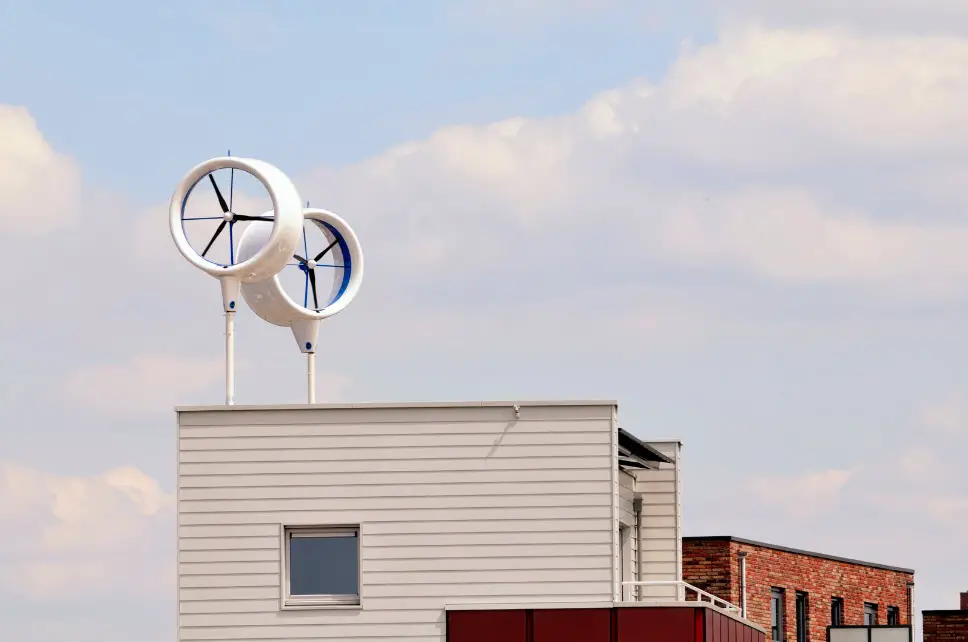
We all enjoy the convenience of having electricity in our homes, from working on a computer, keeping our electronic devices charged, and cooking with appliances. Sometimes our homes are just no match to dreadful weather conditions such as lightning, and heavy storms, which have the potential to cause power outages.
When you have no backup power solutions, there’s pretty much nothing you can do to power up essentials or save your food from spoiling in the fridge. There are a few and affordable backup power solutions you can use for your home.
Page Contents
Solar Panels with Inverter
When discussing affordable and best backup power solutions, you have to mention the clean energy from a solar panel with an inverter. This environmentally friendly power solution generates its power from the sun, hence solar power. Places that get sufficient sun for most of the year benefit the most when using solar panels as a source of energy.
As a safety feature, most solar inverters are programmed to cut power supply to certain electrical appliances when there is a power outage; however, you get an inverter that can override this system when necessary.
Portable Generators
In the list of backup power solutions, a generator has got to be a part of the affordable and best options. However, efficiency and flexibility are essential for the more avid outdoor seeker, so a portable generator is a go-to option. With innovation and technology, generators draw energy from various sources, including solar power, natural gas, diesel, and gasoline. A portable generator is not only valuable for a fixed home setting; you can bring it along with you to the wilderness for a homier experience.
Generally, the size of the generator is an excellent indication of how much wattage is produced, and with that said, the bigger the generator, the more wattage you can expect. You don’t have to get the largest generator out there; decide which size works best for you based on the intended usage, and you can view here to see a few options.
Battery Backup
Unlike other backup power supplies, the battery backup solution comes in handy only in the event of a power outage and cannot produce continuous power with electricity. However, this is the cheapest backup power solution on the list, also known as a ‘battery bank.’ To keep the battery bank fully charged and ready to service your home in a power outage, you need to keep it constantly charged through the already existing power supply.
Wind Turbines
Many power solutions depend on the climate of your area and how often you experience it. If you live in a windy area, the best option for you would be a wind turbine producing kinetic energy. The energy is produced by means of moving propellers, transmitting the energy through a generator, and converting it to electricity. Setting up this system may be expensive initially; however, in the long run, you will be saving a ton and only rely on natural kinetic energy to keep your home powered up.
Open your wallet a bit more
If none of these power backup systems work for you, you should examine other options. Even if your budget is tight, the market is generous, and we’re sure you can find a reliable backup system for your household without breaking the bank.
Permanent/fixed generator
Should you have the space and the budget, you should consider a permanent/fixed generator. You can find models running on diesel or gasoline fuel, and the prices fit budgets of most sizes. These generators are similar to portable units, but they take enormous loads and don’t allow moving. A fixed generator needs a transfer switch and inverter. If the generator also has a battery bank, you will also need a charger.
A great benefit of the fixed generators is that the risk of theft is minor. Suppose you think the generator won’t cover your power needs in case power outages go longer. In that case, you can add a battery bank for better performance and reliability of the backup system.
Permanent generators are commonly used in commercial establishments, but owners of large households should also consider them. Either way, you need to hire a professional and licensed electrician to install the permanent generator. As for buying, you should purchase it from an electrical supply retailer. Ask recommendations from an electrician about the size and your house’s power needs and requirements. The size and installation of the permanent generator are the main factors for the final price. Expect to pay anything from $3,500 to $5,000 for a permanent generator.
Tesla Powerwall
You can use Tesla Powerwall together with solar panel systems, especially if your utility is low or you no longer have net metering. You should also consider it if you use time-of-use rates or demand charges.
When you install a backup power system like Tesla Powerwall with a solar energy system, you get to maintain a sustained power supply day or night, but only if you store enough power from the panels when the sun is shining.
Similar to other home battery products, the Tesla Powerwall is made for day-to-day use at home, and it’s often used with solar panel systems. If your solar panels generate more electricity than you use in your house, you will be able to store the excess in the battery system and not send it back into the grid. On the other hand, if the panels don’t generate enough electricity for your home’s needs, you can still use the electricity from the battery and not buy it from the utility company.
As for the costs, the Tesla Powerwall comes for $7,500 alone, and the hardware you need is $1,000. Prepare around $8,500 for the Powerwall and components without installation costs. The battery, the inverter, installation costs, and various parts give the final price for Tesla Powerwall. Your electrical setup and many other factors will affect the installation process and, therefore, the costs for installation.
Flex Energy storage System
Flex Energy Storage systems are still in their infancy. Flex is a “solar generator” alternative to traditional standby generators. Installation, permits, batteries, and solar panels are included in the estimation costs. Flex is made for backup (5 kWh or ten kWh) and doesn’t feed excess solar power back to the grid.
What aspects to consider when selecting the backup power solution?
Apart from budget, which can be a decisive factor when buying, you should pay attention to other aspects. Details come next:
Keep in mind the runtime
If you take a look at the power backup solutions in the market, you can see that there are many options. However, you need to select one that ensures long backup runtime. You never know how extended or how frequent the power outages will be. Also, you have to be sure that the inverter will offer consistent and appropriate power without distortion and charges quickly.
Ideally, it would help if you got a model made with the most innovative technology and offers a long battery life. Don’t get a model with startup delay.
Identify your power needs
When you search high and low for the most appropriate power backup solution, one of the things to begin with, is to identify your power supply needs. Every household has specific power usage, so you need to run the numbers and see how much power it will need in case of an outage. Even if some homeowners run these numbers on their own, we recommend hiring a certified electrician for the professional assessment.
A certified electrician will examine your electrical equipment power consumption and evaluate your home power capacity needs. When on a mission to find the perfect backup system for your house, having this information is crucial to spot the ideal inverter.
Examine the cost
A backup power plan is essential for your household, but you should always consider its cost. A reliable inverter shouldn’t increase your power bill to the point that it becomes counterproductive. All in all, you should look for an affordable and dependable power backup system that keeps your household up and running in case of a power outage.
Frequently Asked Questions
How much battery backup will you need for your household?
A battery bank made to power the typical American household for three days would supply 90 kilowatt-hours of energy.
To identify the amount of power your household will use during an outage, you must add the Total Watts and multiply the total watts by 1000 to determine kilowatts. It would help if you had a margin of safety for power needs, so multiply kilowatts by 1.25. It’s how you obtain the minimum Generator Capacity that you need for your home.
Should you invest in a battery backup for your home?
Whether you use a computer or other electrical devices, you should always use a battery backup or a UPS to protect your electrical devices and appliances. Brownouts, power and electricity outages, and surges can cause data loss and physical damage to your devices and appliances. Plus, you won’t be able to have water or power to cook dinner.
What’s the price for a whole-house battery backup?
For a medium-sized home, a home battery backup system ranges from $10,000 to $20,000. Fuel-powered generators have prices ranging from $7,000 to $15,000. Even if you pay more for a backup home battery than for a traditional generator, you will enjoy many benefits.
How long do home battery backups last?
In case of an outage, a typical home battery will last for at least a day or two—how conservative you are with the electricity is an essential factor to decide. If you pair it with a solar panel system, you will create an end-to-end system to produce, store, and power your household.
Is it easy to install a backup system at home?
It’s not an easy answer because there are several options for backup systems for houses. Should you decide to install a battery backup, for instance, the type and size of the battery affect the installation process. You might need to hire a qualified electrician to wire to the consumer unit or distribution board. He will also select the critical loads that the backup system will power through load separation in case of a blackout.
Small backup solutions such as solar home systems are more straightforward to install than battery backup systems. They only require plug-and-play systems that don’t need help from professionals.
 A Very Cozy Home Home Decor Tips and Ideas
A Very Cozy Home Home Decor Tips and Ideas 
